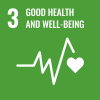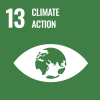Cox’s Bazar, 26 May 2023 – “By a cruel twist of fate, I have lost my shelter for the second time in just a couple of months,” says sexagenarian Rohingya refugee Jarina Khatun as she surveys her destroyed shelter. “Now, with the monsoon season still to come, I am worried about more bad days awaiting me and my family.”
On 5 March, she had lost her bamboo and tarpaulin shelter in a devastating fire that ravaged a section of the sprawling refugee camps in Cox’s Bazar. Jarina had barely finished rebuilding her temporary shelter, with help from the International Organization on Migration (IOM), when the cyclone struck.
On 14 May, Cyclone Mocha made landfall at the Bangladesh-Myanmar border. The Government of Bangladesh immediately declared “Great Danger Signal 10” in Cox’s Bazar and neighbouring coastal districts. Three flags – the highest warning signal – were hoisted in the refugee camps of Cox’s Bazar and neighbouring areas.

After Cyclone Mocha passed the Rohingya refugee camps, Rohingya cash-for-workers are removing the fallen tree on the rooftop of refugees’ shelters. Photo: IOM
While the Cox’s Bazar district itself was largely spared the full force of the cyclone, the intense and heavy wind and rainfall still destroyed or damaged shelters, water points, latrines, culverts, bridges and other key community infrastructure in what is the world’s largest refugee camp with nearly 1 million Rohingya refugees, along with host community areas of Bangladesh.
Shocked to have faced calamity in the space of a couple of months, Jarina, who lives with her eldest son, daughter-in-law, and two grandchildren, immediately sought help from IOM’s teams for some shelter materials to rebuild her shelter, yet again.

Jarina Khatun is doing her household chores after her shelter was affected by Cyclone Mocha. Photo credit: IOM/Md Kowshikur Rahman
“As the storm raged on, my heart sank as I watched my belongings, including food, clothes, and cooking utensils, being washed away by the heavy rain and strong winds,” she says.
“When the fire broke out in March, we were in the hospital with my pregnant daughter-in-law. When we returned home, we found nothing, only ashes. We quickly got bamboo and tarpaulin and made a temporary shelter. Now, within just two months, I have lost that shelter, too, due to the cyclone. I am very worried about the upcoming monsoon rains. I am very scared for my two little grandchildren,” Jarina says.

Rohingya refugees who have been affected by Cyclone Mocha are receiving the required shelter materials from IOM. Photo: IOM
Jarina is one of more than 16,000 Rohingya refugees who were affected by that devastating fire in March and are now again faced with another disaster due to the cyclone.
Rustom Ali, a Rohingya volunteer of the IOM-run Disaster Management Unit from the same camp as Jarina, says they were as prepared as they could be for the cyclone as IOM site management teams had alerted them and asked them to take necessary precautions. They were fully trained in how to react and support their communities in this type of disaster.

After Cyclone Mocha passed through the Rohingya refugee camps, IOM teams, along with Rohingya volunteers, conducted assessments to measure the damage caused by the event. Photo: IOM
“When the wind got very violent, women and kids in my community started screaming as the howling winds battered their shelters,” he says, adding that he looked around and saw many of his neighbours struggling to save their shelters and everything they owned.
Rustom recalls that people were trying to save themselves and their belongings. Some were injured. His team had started taking the vulnerable people to a nearby learning centre with a stronger structure than the shelters and where they could be more protected.

Affected by Cyclone Mocha, Rohingya Camp 11 refugees are rebuilding their shelters for the second time after losing them two months ago to a devastating fire. Photo: IOM/Md Kowshikur Rahman
Early the next day, a team from IOM arrived at the camp to assess the damage caused by the cyclone. They saw the devastation the cyclone had caused and knew they had to act fast.
“IOM teams quickly distributed emergency supplies, including tarpaulins and bamboo for fixing our shelters to the affected families on an urgent basis,” Rustom says.
He is grateful for the assistance he and his neighbours received, but like Jarina, he is very worried about the upcoming monsoon. He says his family needs permanent shelter to protect them from the rain and wind.

A view of Rohingya Camp 11 – which was affected by a cyclone and fire in two months' interval – from the shelter of Jarina Khatun. Photo: IOM/Md Kowshikur Rahman
Extreme weather hazards will occur more frequently due to climate change in the years ahead. The linkages between climate change, migration and displacement are increasingly pressing worldwide. To avert, mitigate and address displacement linked to climate disasters and strengthen people’s resilience, IOM calls on governments to implement sustainable climate adaptation, preparedness and disaster risk reduction measures.
IOM is working to support the cyclone-affected refugees and the host communities with shelters, WASH (water, sanitation, and hygiene), health, protection, and other required humanitarian assistance.
With funding for the Rohingya response having been drastically reduced, the international community urgently needs to increase its support to ensure that the Cox’s Bazar refugee camps receive adequate support as the monsoon season looms.
This story was written by Tarek Mahmud in Cox’s Bazar



